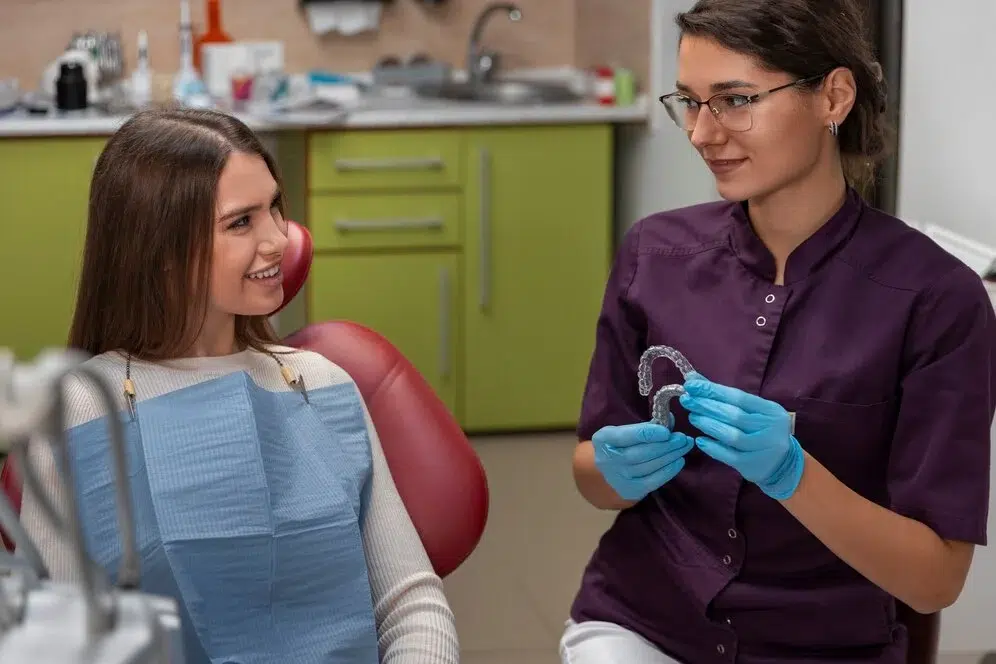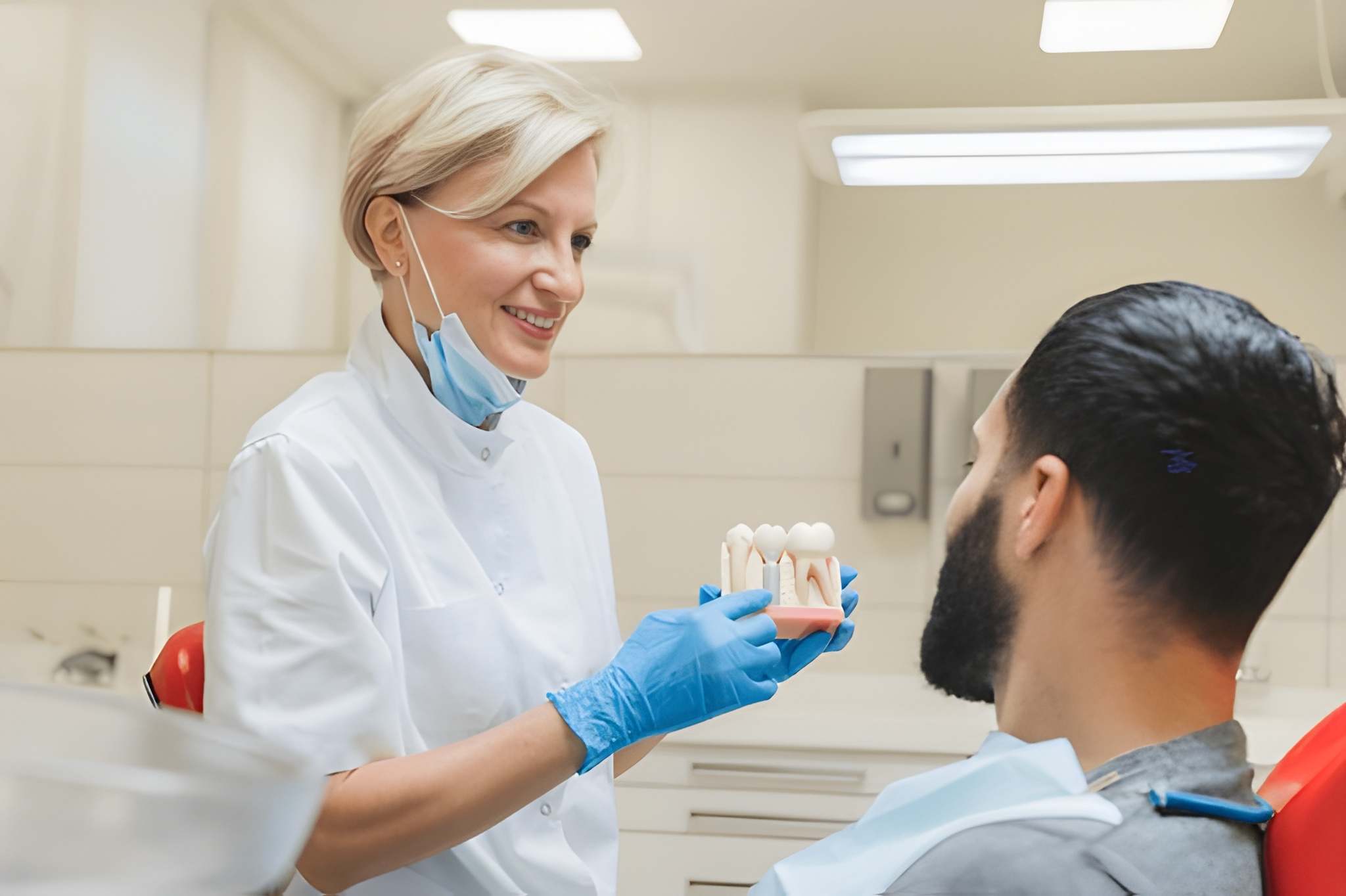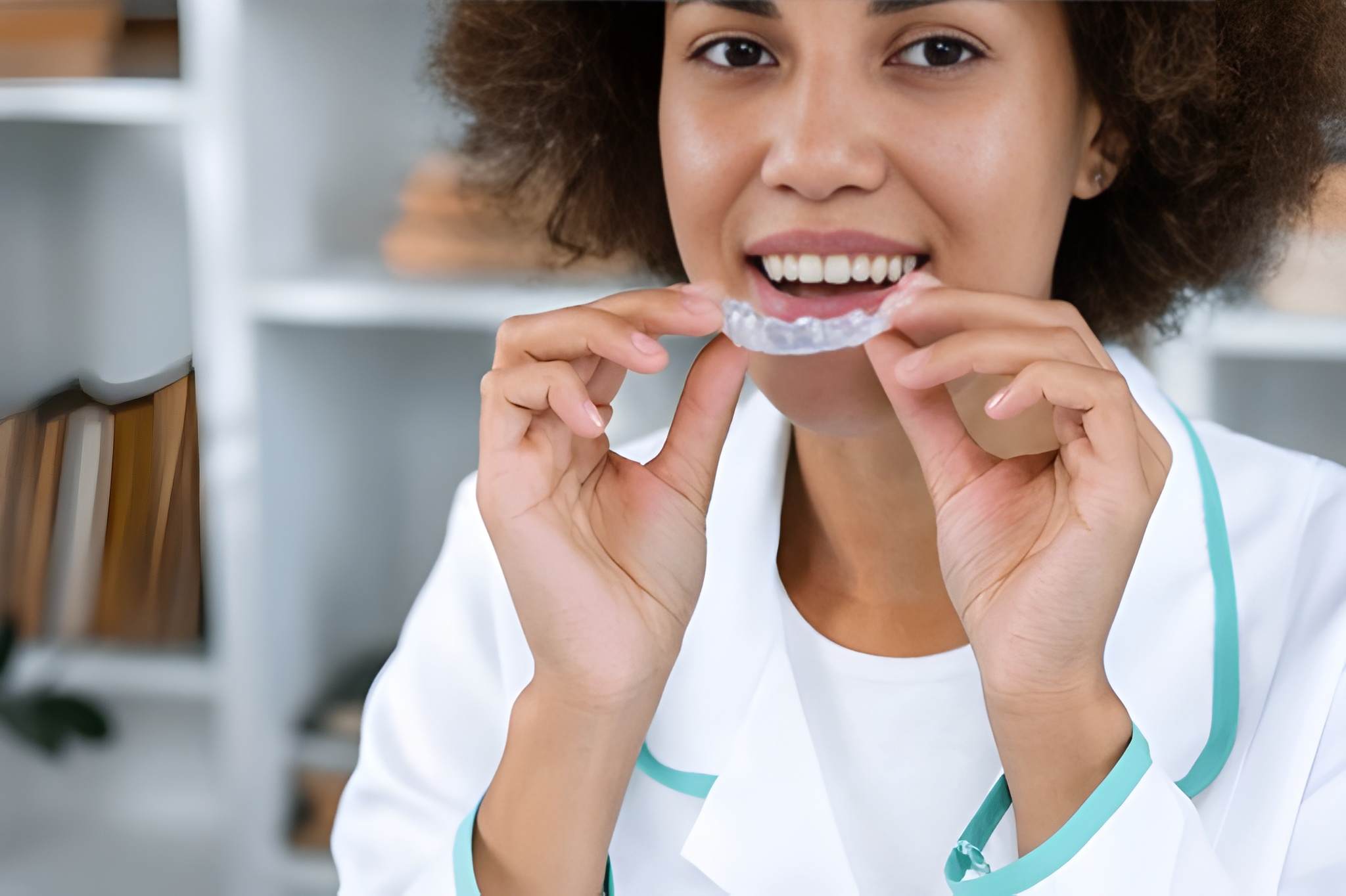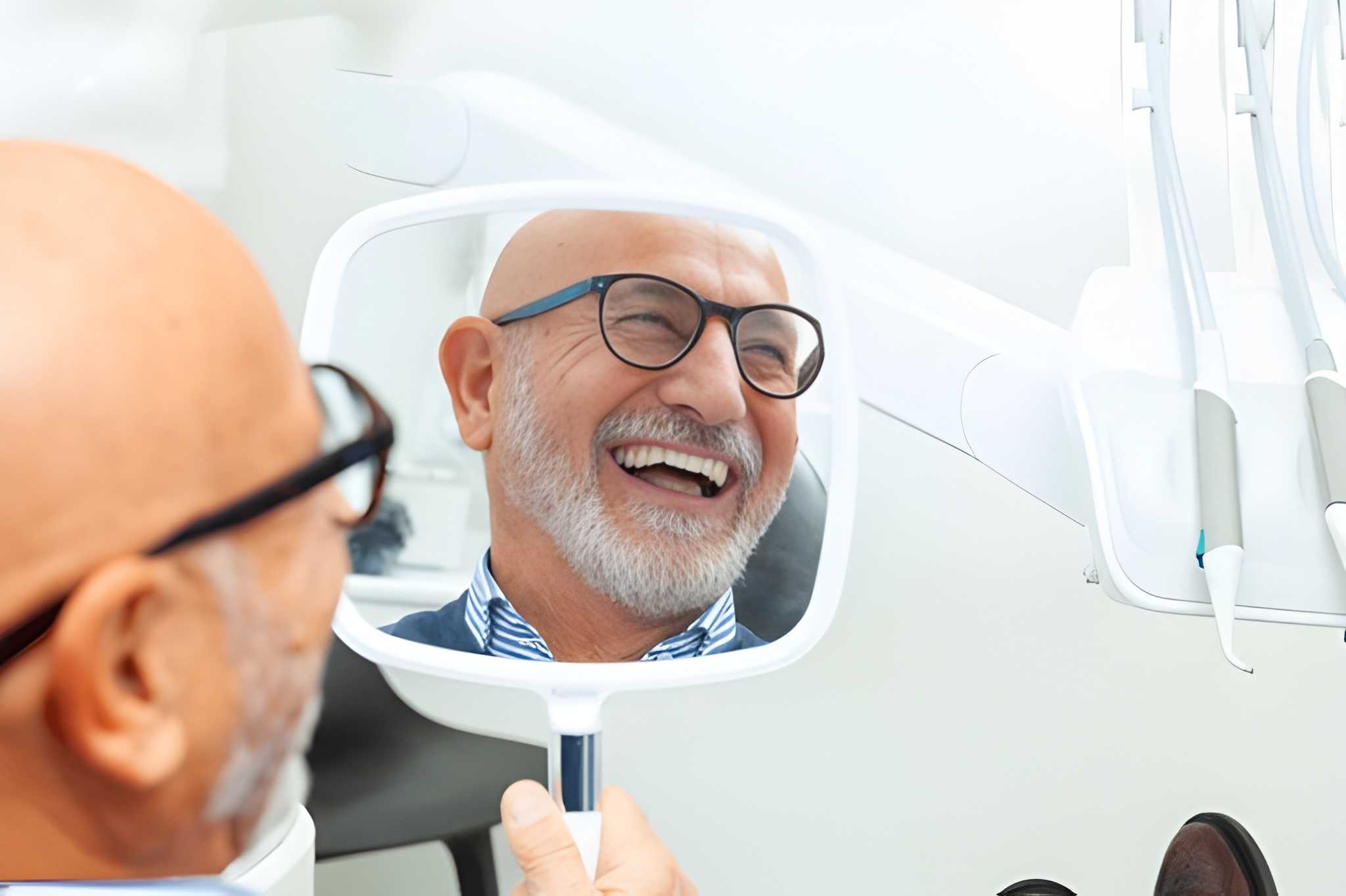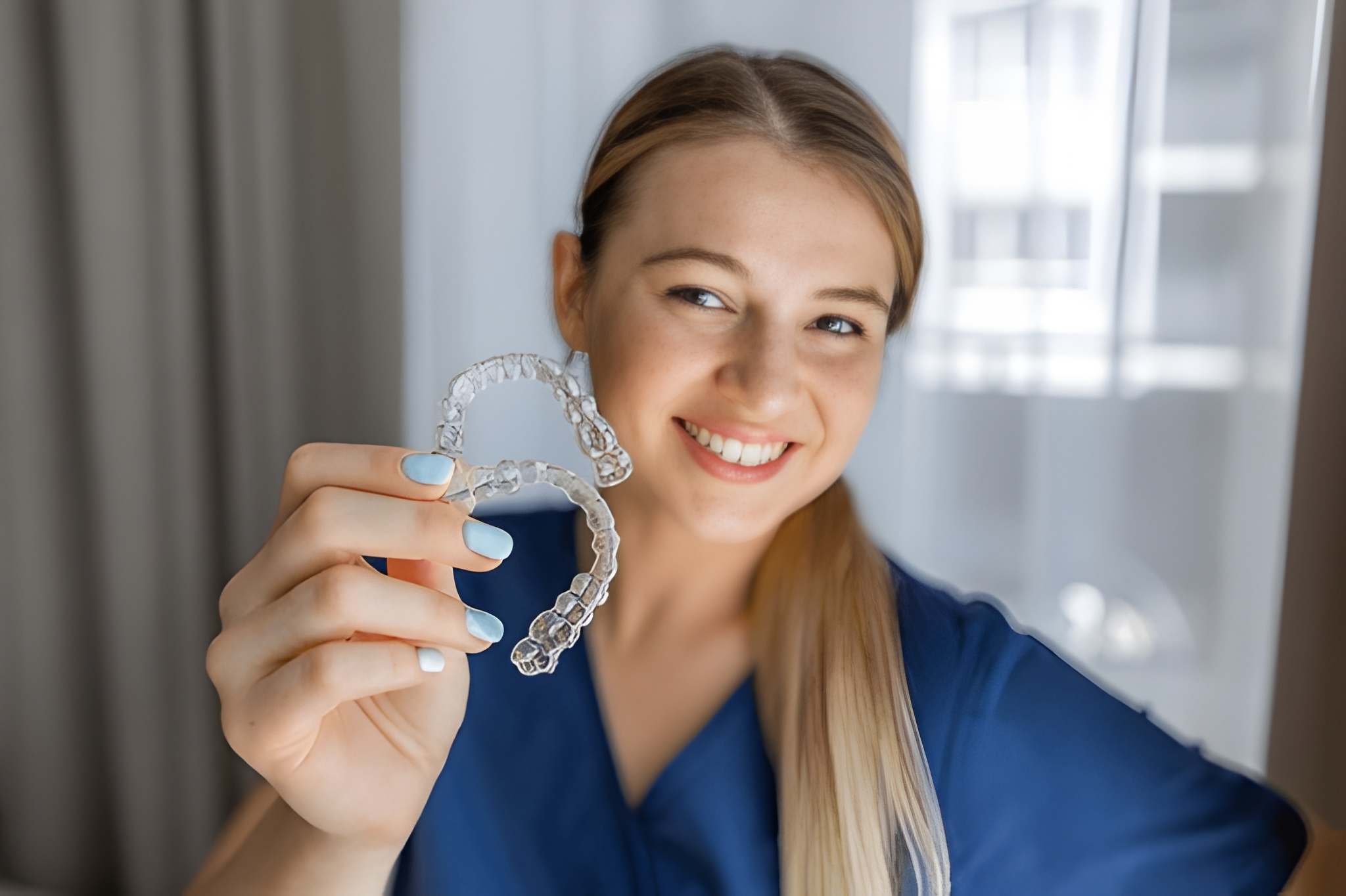In the world of orthodontic treatment, Invisalign has emerged as a popular choice for achieving straighter teeth and a more confident smile. Unlike traditional braces, Invisalign offers a discreet and comfortable alternative, utilizing clear aligners to gradually shift teeth into alignment. Whether you’re considering Invisalign for yourself or a loved one, understanding the Invisalign Pros and Cons can help you make an informed decision about your orthodontic journey.
Explanation of Invisalign Clear Aligners
Invisalign is a modern orthodontic treatment that uses a series of clear, removable aligners to straighten teeth gradually. Unlike traditional metal braces, which rely on brackets and wires, Invisalign aligners are made of smooth, BPA-free plastic material. Each set of aligners is custom-made to fit snugly over the teeth and applies gentle pressure to guide them into the desired position over time. The treatment process begins with a consultation with an Invisalign-trained dentist or orthodontist, who will assess your orthodontic needs and develop a customized treatment plan using advanced 3D imaging technology.
Invisalign treatment consists of several sets of aligners, each worn for about one to two weeks before being replaced with the next set in the series. Each aligner is slightly different from the previous one, gradually moving the teeth into alignment according to the treatment plan. Patients typically wear their aligners for 20 to 22 hours a day, removing them only for eating, drinking, brushing, and flossing. Regular check-up appointments with the dentist or orthodontist are scheduled every few weeks to monitor progress and provide new sets of aligners. The duration of Invisalign treatment varies depending on the complexity of the case but typically ranges from six months to two years.
Invisalign Pros and Cons
Here are the Invisalign Pros and Cons:
Pros of Invisalign Treatment
Nearly Invisible Appearance: One of the most significant advantages of Invisalign is its nearly invisible appearance. The clear aligners are made of transparent plastic material, making them much less noticeable compared to traditional metal braces. This makes Invisalign a popular choice for adults and teenagers who may feel self-conscious about wearing braces.
Removable for Eating and Oral Hygiene: Unlike traditional braces, which are fixed onto the teeth, Invisalign aligners are removable. This means that patients can easily take them out before eating or drinking, allowing them to enjoy their favorite foods without restrictions. Removing the aligners makes it much easier to brush and floss properly, promoting better oral hygiene throughout the treatment process.
Comfortable Compared to Traditional Braces: Invisalign aligners are made of smooth, BPA-free plastic material, making them much more comfortable to wear compared to traditional metal braces. There are no sharp wires or brackets that can irritate the inside of the mouth, reducing the risk of discomfort or injury. Many patients find Invisalign to be a more comfortable orthodontic option overall.
No Dietary Restrictions: With Invisalign, there are no dietary restrictions like those associated with traditional braces. Since the aligners are removable, patients can continue to enjoy all their favorite foods and drinks without worrying about damaging their orthodontic appliances. This freedom allows for a more enjoyable and flexible eating experience during treatment.
Fewer Dental Visits Required: Invisalign treatment typically requires fewer visits to the dentist or orthodontist compared to traditional braces. While regular check-ups are still necessary to monitor progress and provide new sets of aligners, there are typically fewer adjustment appointments needed. This makes Invisalign a convenient option for busy individuals with hectic schedules. Overall, the pros of Invisalign treatment make it an attractive choice for those seeking a comfortable, convenient, and discreet way to straighten their teeth.
Cons of Invisalign Treatment
Cost May Be Higher Than Traditional Braces: One potential drawback of Invisalign treatment is that it may be more expensive than traditional braces. The cost of Invisalign can vary depending on factors such as the complexity of the case, the duration of treatment, and the geographic location of the dental practice. In general, Invisalign tends to be pricier due to the advanced technology and materials used in the fabrication of the clear aligners. However, many patients find that the benefits of Invisalign, such as its discreet appearance and removable design, justify the higher cost.
Not Suitable for Severe Orthodontic Issues: While Invisalign can effectively treat a wide range of orthodontic issues, including mild to moderate misalignment, crowding, and spacing issues, it may not be suitable for severe cases. Complex orthodontic issues that require significant tooth movement or jaw realignment may be better addressed with traditional braces or other orthodontic treatments. It’s essential for patients to undergo a thorough evaluation by an Invisalign-trained dentist or orthodontist to determine if Invisalign is the appropriate treatment option for their specific needs.
Compliance Is Essential for Successful Treatment: Another potential downside of Invisalign treatment is that it requires a high level of patient compliance for successful results. In order for Invisalign to be effective, patients must wear their aligners for 20 to 22 hours a day, removing them only for eating, drinking, brushing, and flossing. Failure to wear the aligners as directed can prolong treatment time and compromise the final outcome. Patients must be committed to following their dentist’s instructions and wearing their aligners consistently throughout the treatment process.
Requires Disciplined Wear Schedule: In addition to compliance, Invisalign treatment also requires a disciplined wear schedule. Patients must remember to change their aligners every one to two weeks as instructed by their dentist or orthodontist. Failure to switch to the next set of aligners on time can delay progress and prolong treatment. It’s important for patients to stay organized and adhere to the prescribed wear schedule to ensure the success of their Invisalign treatment.
May Cause Temporary Discomfort or Speech Changes: Like any orthodontic treatment, Invisalign may cause temporary discomfort or speech changes, especially during the initial adjustment period. Some patients may experience mild soreness or pressure as their teeth gradually shift into alignment. Wearing aligners may temporarily affect speech patterns or cause a slight lisp until the mouth adjusts to the presence of the aligners. However, these issues typically subside within a few days to a week as the patient’s mouth becomes accustomed to the aligners. Overall, while there are some potential drawbacks to Invisalign treatment, many patients find that the benefits outweigh the cons, resulting in a positive orthodontic experience and a beautiful, confident smile.
Comparison with Traditional Braces
When weighing the pros and cons of Invisalign, it’s essential to consider how it compares to traditional braces.
Aesthetic Appearance
One significant difference between Invisalign and traditional braces is their aesthetic appearance. Invisalign clear aligners are virtually invisible when worn, making them a discreet option for orthodontic treatment. This is particularly appealing to adults and teenagers who may feel self-conscious about wearing metal braces. In contrast, traditional braces consist of metal brackets and wires that are visible when smiling or talking, which can affect the wearer’s confidence and self-esteem. The discreet appearance of Invisalign aligners is often cited as a major advantage of this treatment option.
Convenience and Maintenance
Invisalign aligners offer greater convenience and ease of maintenance compared to traditional braces. Since they are removable, patients can easily take them out before eating or brushing, allowing them to enjoy their favorite foods without restrictions and maintain proper oral hygiene throughout treatment. In contrast, traditional braces are fixed onto the teeth and require special care to prevent food particles from getting trapped around the brackets and wires. This can be challenging, especially for younger patients or those with busy lifestyles.
Treatment Duration
The duration of treatment is another factor to consider when comparing Invisalign with traditional braces. In general, Invisalign treatment tends to be faster than traditional braces for mild to moderate orthodontic issues. The average treatment time for Invisalign ranges from six months to two years, depending on the complexity of the case and the patient’s compliance with wearing the aligners. Traditional braces may require longer treatment times, typically ranging from one to three years, depending on the severity of the orthodontic issues and the type of braces used.
Effectiveness in Correcting Orthodontic Issues
Both Invisalign and traditional braces are effective in correcting a wide range of orthodontic issues, including misalignment, crowding, spacing issues, and bite problems. However, the effectiveness of each treatment option may vary depending on the individual patient’s needs and the complexity of their case. In general, Invisalign is well-suited for mild to moderate orthodontic issues, while traditional braces may be more appropriate for severe cases or patients requiring more extensive tooth movement or jaw realignment. Consulting with an orthodontist can help patients determine which treatment option is best suited to their specific needs and goals.
Decision-making Factors
When considering Invisalign treatment, several decision-making factors come into play.
Severity of Orthodontic Issues
The severity of your orthodontic issues is a crucial factor to consider when weighing the pros and cons of Invisalign treatment. Invisalign is well-suited for mild to moderate orthodontic problems, such as minor misalignment, crowding, or spacing issues. However, it may not be suitable for severe cases that require extensive tooth movement or jaw realignment. Patients with more complex orthodontic issues may benefit more from traditional braces or other orthodontic treatments that can provide greater control and precision in tooth movement.
Lifestyle Considerations
Lifestyle considerations also play a significant role in the decision-making process for Invisalign treatment. Invisalign aligners offer greater flexibility and convenience compared to traditional braces, as they are removable and allow patients to eat, drink, and engage in activities without restrictions. This makes Invisalign particularly appealing to individuals with busy lifestyles or those who participate in contact sports or musical instruments that may be challenging with traditional braces.
Budget and Insurance Coverage
Budgetary constraints and insurance coverage are important factors to consider when evaluating the pros and cons of Invisalign treatment. In general, Invisalign tends to be more expensive than traditional braces due to the advanced technology and materials used in the fabrication of the clear aligners. Patients should inquire about the cost of treatment and whether their insurance plan covers Invisalign or traditional braces. Some insurance plans may offer partial coverage for orthodontic treatment, while others may require patients to pay out-of-pocket for certain procedures. Patients should carefully review their insurance policy and explore financing options to determine the most affordable treatment option for their budget.
Personal Preferences
Personal preferences play a significant role in the decision-making process for Invisalign treatment. Some patients may prefer the discreet appearance and removable design of Invisalign aligners, while others may feel more comfortable with the traditional look and feel of metal braces. Additionally, factors such as treatment duration, convenience, and lifestyle impact patient preferences. It’s essential for patients to consider their individual needs, preferences, and treatment goals when deciding between Invisalign and traditional braces. Consulting with an Invisalign-trained dentist or orthodontist can help patients evaluate their options and make an informed decision based on their unique circumstances.
Conclusion
Invisalign treatment offers a modern and convenient option for achieving a straighter smile, but it’s essential to weigh the pros and cons carefully before making a decision. Considering factors such as the severity of orthodontic issues, lifestyle considerations, budget, and personal preferences can help individuals determine if Invisalign is the right choice for them. While it may not be suitable for everyone, those who value the discreet appearance, convenience, and flexibility of Invisalign aligners often find the benefits outweigh any potential drawbacks. Ultimately, consulting with an Invisalign-trained dentist or orthodontist can provide personalized guidance and ensure that patients make informed decisions about their orthodontic treatment.
FAQs
Is Invisalign treatment painful?
Invisalign treatment may cause mild discomfort or pressure during the initial adjustment period, but it is generally less painful than traditional braces.
How long does Invisalign treatment take?
The duration of Invisalign treatment varies depending on the complexity of the case, but it typically ranges from six months to two years.
Can I eat and drink with Invisalign aligners?
Invisalign aligners are removable, allowing patients to eat and drink most foods without restrictions. However, they should be removed before consuming anything except water to prevent damage to the aligners.

